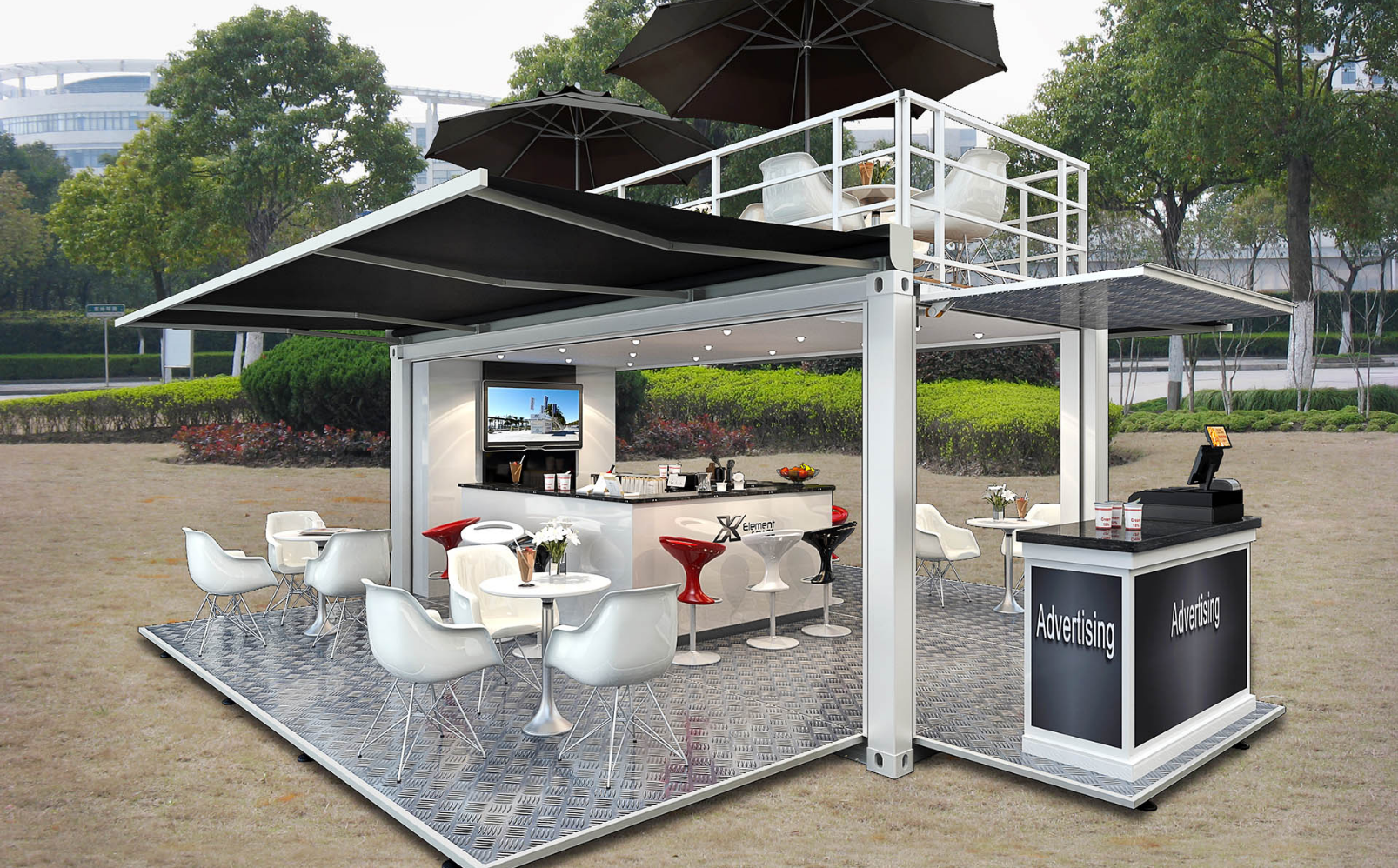Email format error
Email cannot be empty
Email already exists
6-20 characters(letters plus numbers only)
The password is inconsistent
Email format error
Email cannot be empty
Email does not exist
6-20 characters(letters plus numbers only)
The password is inconsistent


A. Definition and Overview of a 20-foot Coffee Shop Expandable Container Restaurant
A 20-foot coffee shop expandable container restaurant is a modern, innovative take on traditional cafes. It involves transforming a standard 20-foot shipping container into a fully functional, mobile coffee shop. These container cafes are designed to be compact yet expandable, offering a flexible and adaptable solution for coffee entrepreneurs.
B. Design and Functionality
The design of a container coffee shop leverages the robust structure of shipping containers, ensuring durability and security. These containers are modified to include essential features such as windows, doors, insulation, and electrical and plumbing systems. The layout is meticulously planned to maximize the limited space, often incorporating fold-out sections or expandable parts to increase serving and seating capacity.
C. Benefits Compared to Traditional Brick-and-Mortar Cafes
1. Flexibility and Mobility: Unlike traditional cafes, container coffee shops can be relocated with relative ease. This mobility allows business owners to test different markets and adapt to changing customer locations, such as festivals, events, or busy street corners.
2. Cost-Effectiveness: Initial setup costs for container cafes are significantly lower than those for traditional cafes. The expenses associated with property leases, extensive renovations, and long-term commitments are minimized.
3. Sustainability and Eco-Friendly Appeal: Repurposing shipping containers is a sustainable practice that reduces waste. Additionally, container cafes can incorporate eco-friendly features such as solar panels, rainwater collection systems, and energy-efficient appliances.
A. Current Market Trends and Demand for Coffee Shops and Restaurants
The coffee industry has been experiencing steady growth, driven by increasing consumer demand for specialty coffee and unique cafe experiences. Consumers are seeking out convenient, high-quality coffee options, creating a fertile market for innovative concepts like container cafes.
B. Niche of Container-Based Establishments
Container-based establishments are gaining popularity in the food service industry due to their distinctive look and practicality. These establishments stand out in a crowded market, offering a fresh and innovative approach to the traditional cafe experience. Their compact and efficient design appeals to urban environments where space is at a premium.
C. Target Demographics and Geographical Locations
1. Identifying Potential Customer Segments: Ideal customers for container cafes include young professionals, students, and urban dwellers who appreciate convenience and unique dining experiences.
2. Ideal Locations for Container Restaurants: High-traffic areas such as business districts, university campuses, and tourist spots are prime locations for container cafes. Additionally, temporary setups at events, markets, and festivals can capture a diverse and transient customer base.
A. Types of Business Models for Container Restaurant Ventures
1. Ownership Models: Container coffee shops can be operated as independent businesses or as part of a franchise model. Franchising offers the advantage of established brand recognition and support systems.
2. Operational Models: These cafes can be either mobile, relocating to different locations as needed, or fixed in a strategic spot with high foot traffic.
B. Revenue Streams and Pricing Strategies
1. Menu Pricing and Product Offerings: A well-crafted menu that balances quality and affordability is crucial. Offering specialty coffees, artisanal snacks, and seasonal items can attract a loyal customer base. Pricing should reflect the quality of the products while remaining competitive.
2. Additional Income Streams: Beyond coffee and snacks, container cafes can generate additional revenue through merchandise sales, hosting events, or partnering with local artists for pop-up galleries.
C. Cost Analysis and Financial Projections
1. Initial Investment and Startup Costs: The initial investment includes purchasing and modifying the container, outfitting it with necessary equipment, and obtaining permits. These costs are generally lower than those for traditional cafes.
2. Operational Expenses and Profit Margins: Operational costs include staffing, supplies, utilities, and maintenance. With efficient management, container cafes can achieve healthy profit margins due to their lower overhead costs.
A. Designing the Container Restaurant
1. Considerations for Layout and Space Optimization: The interior layout should prioritize functionality and customer flow. Incorporating multi-purpose furniture and modular components can maximize the use of space.
2. Interior Design Elements and Branding: The design should reflect the cafe's brand, creating a welcoming and memorable atmosphere. Attention to detail in decor, color schemes, and signage is essential for creating a cohesive and attractive environment.
B. Construction Process
1. Steps Involved in Container Modification: Modifying a shipping container involves cutting out sections for windows and doors, reinforcing the structure, adding insulation, and installing electrical and plumbing systems.
2. Compliance with Health and Safety Regulations: Ensuring the container meets all local health and safety regulations is crucial. This includes proper ventilation, sanitation, and adherence to building codes.
A. Creating an Ideal Customer Experience
1. Importance of Ambiance and Atmosphere: A container cafe should offer a unique and pleasant atmosphere that encourages customers to return. This can be achieved through thoughtful interior design, comfortable seating, and pleasant lighting.
2. Focus on Exceptional Customer Service: Training staff to provide excellent customer service is vital. Friendly, knowledgeable baristas can significantly enhance the customer experience, creating a loyal customer base.
B. Menu Variety and Convenience
1. "Crafting a Diverse Menu to Cater to Different Tastes": Offering a range of coffee beverages, teas, and snacks ensures there is something for everyone. Seasonal specials and limited-time offerings can keep the menu exciting.
2. Offering Convenience through Efficient Service and Operations: Streamlining operations to ensure quick service is key in a compact setting. Implementing mobile ordering and contactless payment options can further enhance convenience.
In conclusion, a 20-foot coffee shop expandable container restaurant combines innovation, sustainability, and practicality, making it a compelling alternative to traditional cafes. By understanding the market, developing a robust business model, and focusing on design and customer experience, entrepreneurs can create a successful and memorable cafe that stands out in the competitive coffee industry.